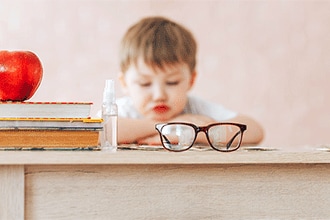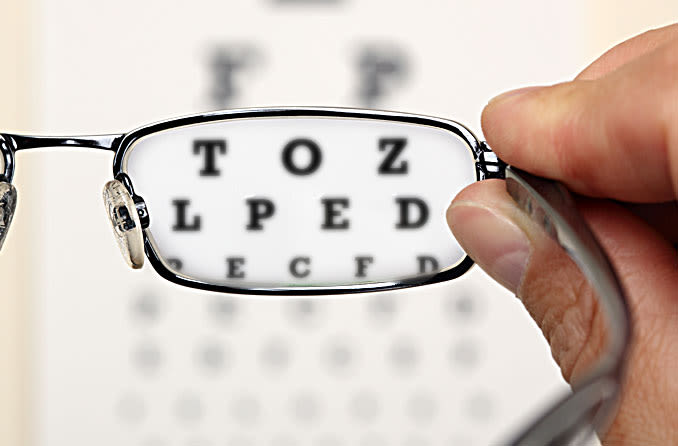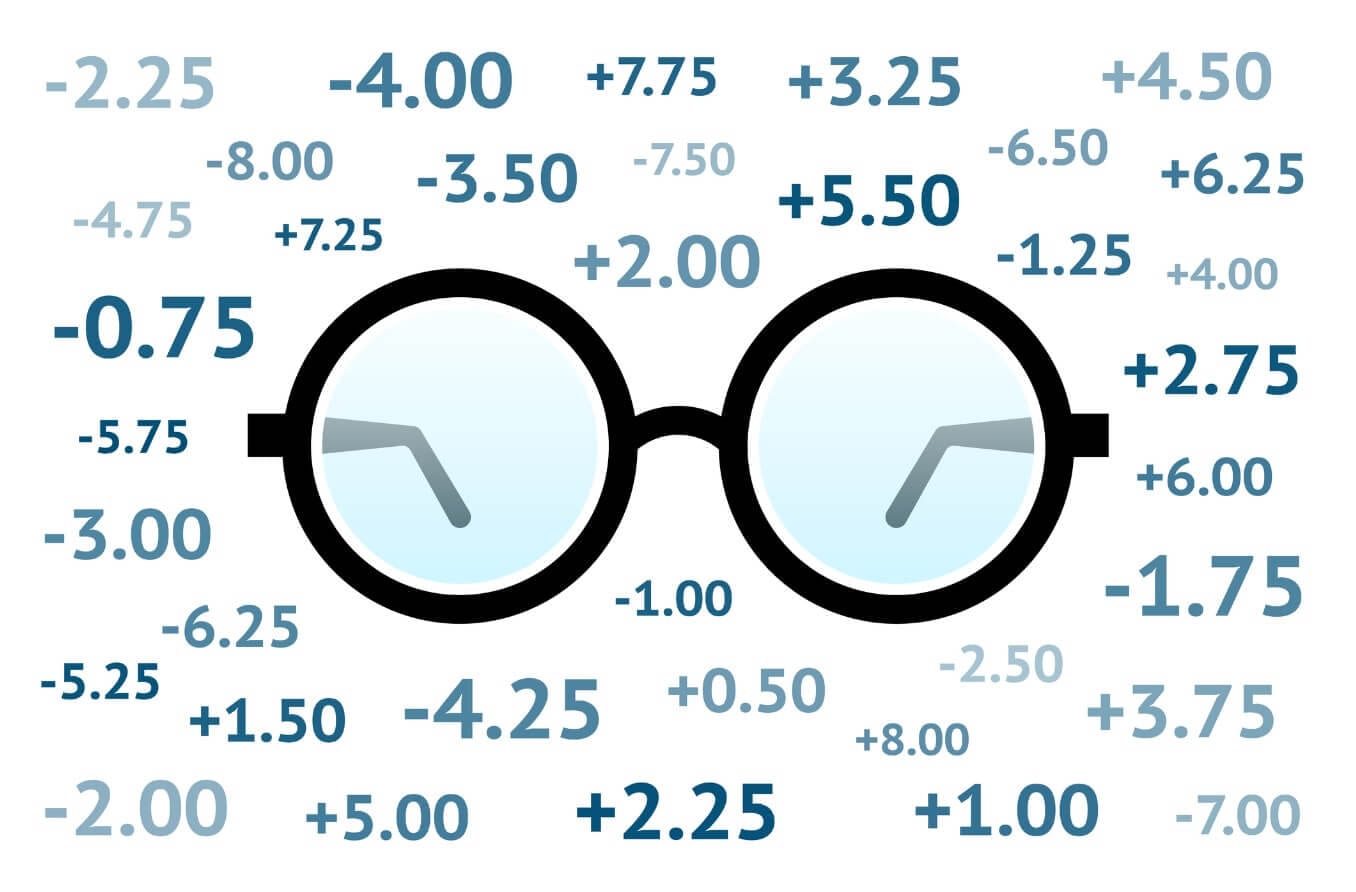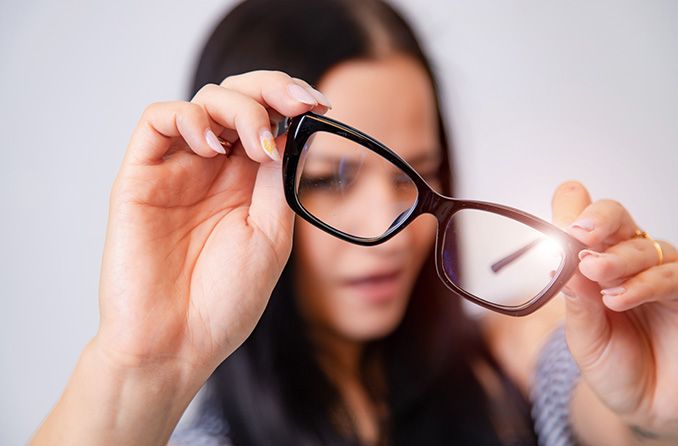Will my child’s vision get worse without glasses?
If your child has a refractive error like myopia (nearsightedness), they probably need prescription eyeglasses or contact lenses to correct or manage the issue. But will their vision be harmed or get worse if they don’t wear prescription eyewear? In general, no, it won’t.
Myopia continues to progress in most affected children whether or not they wear glasses. There are also times that the refractive error is different in the two eyes, meaning each eye has a different vision prescription. This can cause amblyopia (also called lazy eye) to develop.
Not wearing eyeglasses, or wearing an incorrect prescription, can cause your child to experience blurriness, eye strain and other uncomfortable symptoms. If these issues aren’t addressed, they can impact your child’s quality of life dramatically and make school much harder than it needs to be.
Corrective lenses for myopia are important
Your child’s vision is not likely to worsen just because they don’t wear prescription glasses. However, corrective lenses are the best way to improve vision that needs correction. For example, if your child has trouble seeing up-close or faraway objects clearly, getting glasses could help significantly.
Many children have myopia, a refractive error that makes faraway objects appear blurry. If your child doesn’t have proper vision correction, they may experience the following symptoms:

- Headaches
- Eye strain
- Blurry vision
- Squinting
- Difficulty seeing the whiteboard in class
- Struggles with schoolwork
Keep a lookout for these symptoms and ask your child if they have trouble with any other vision-related issues. If so, they may need glasses (or an update to their current glasses prescription) in order to see clearly and eliminate side effects.
READ MORE: How do I know if my child needs glasses?
Vision changes throughout childhood
It should be noted that vision continues to develop throughout childhood, so your child’s vision may not be the same now as it was one year ago. It’s normal for a person’s vision to change as the eyeballs grow and the visual system develops. In fact, your eyesight doesn’t begin to “level out” until you reach your 20s.
So if it seems like your child’s vision is getting worse as they get older, it could simply be that it’s part of the natural development of their eyesight — not from going without glasses.
But if your child’s vision changes dramatically in a short period of time, or you notice other serious eye- or vision-related symptoms, schedule an exam with their eye doctor as soon as possible.
It’s also important to remember that a school vision screening is not the same as a comprehensive eye exam. While important and beneficial, school screenings are unlikely to detect a number of vision conditions, including hyperopia (farsightedness) and amblyopia.
What can harm your child’s vision?
Not wearing glasses, or wearing glasses with the wrong prescription, may not permanently harm your child’s eyes or cause their vision to worsen. However, things such as injuries, infections, prolonged screen time and ultraviolet exposure can cause discomfort and additional mild to severe eye and vision problems.
Eye injuries
Depending on the severity, eye injuries can, in some cases, lead to vision loss. Kids’ eye injuries most frequently occur while playing sports. Common causes of eye injuries include:
- Balls, darts or pucks
- Fireworks
- Fingernails, elbows and other body parts
- Chemical substances
- Debris
- Toys
If your child’s eye is injured, take them to your eye doctor immediately for assessment and treatment.
READ MORE: Eye safety basics
Eye infections
Some eye infections can lead to blurry vision, light sensitivity, double vision and/or eye pain, among other symptoms. Infections that may affect a child’s vision include:
- Conjunctivitis – Pink eye
- Orbital cellulitis – Infection of the fat and soft tissue located in the eye socket
- Dacryocystitis – Tear duct infection
If left untreated, an eye infection is likely to get worse. If you notice any eye infection symptoms in your child, don’t hesitate to contact your eye doctor for assessment and treatment.
READ MORE: The causes and types of vision loss in kids
Blue light exposure
Looking at digital screens for long periods of time can irritate your child’s eyes. This can cause digital eye strain, which includes symptoms such as:
- Dry eyes
- Blurred vision
- Headaches
- Loss of focus
- Tired eyes
Some research suggests that excessive use of digital screens can contribute to myopia in young individuals by up to 80%.
Encourage your child to spend time away from TV, computer and phone screens whenever possible.
SEE RELATED: How screens affect kids’ eyes and what you can do about it
Ultraviolet (UV) exposure
Ultraviolet (UV) rays given off by the sun can cause serious eye damage if your child’s eyes are not protected. In fact, long-term exposure to sunlight can lead to eye conditions such as macular degeneration and cataracts.
Very bright outdoor conditions can cause discomfort for the eyes, but protecting your child’s eyes is easy with the right pair of sunglasses. Just look for 99% to 100% UV protection on the label when selecting the frames.
If your child plays an outdoor sport such as soccer or baseball, you may also consider the benefits of sport sunglasses.
Protect your child’s vision with eye exams
A yearly comprehensive eye exam is the best way to make sure your child’s eyes are healthy and determine if their vision has changed. Again, it is normal for vision to become more blurry during the years that it continues to develop.
In addition to measuring your child’s visual acuity (sharpness of vision), eye exams can also reveal if they have any underlying vision conditions or other problems that you may not have been aware of. Certain eye conditions may contribute to a child’s ability to see clearly and should be addressed as soon as possible.









